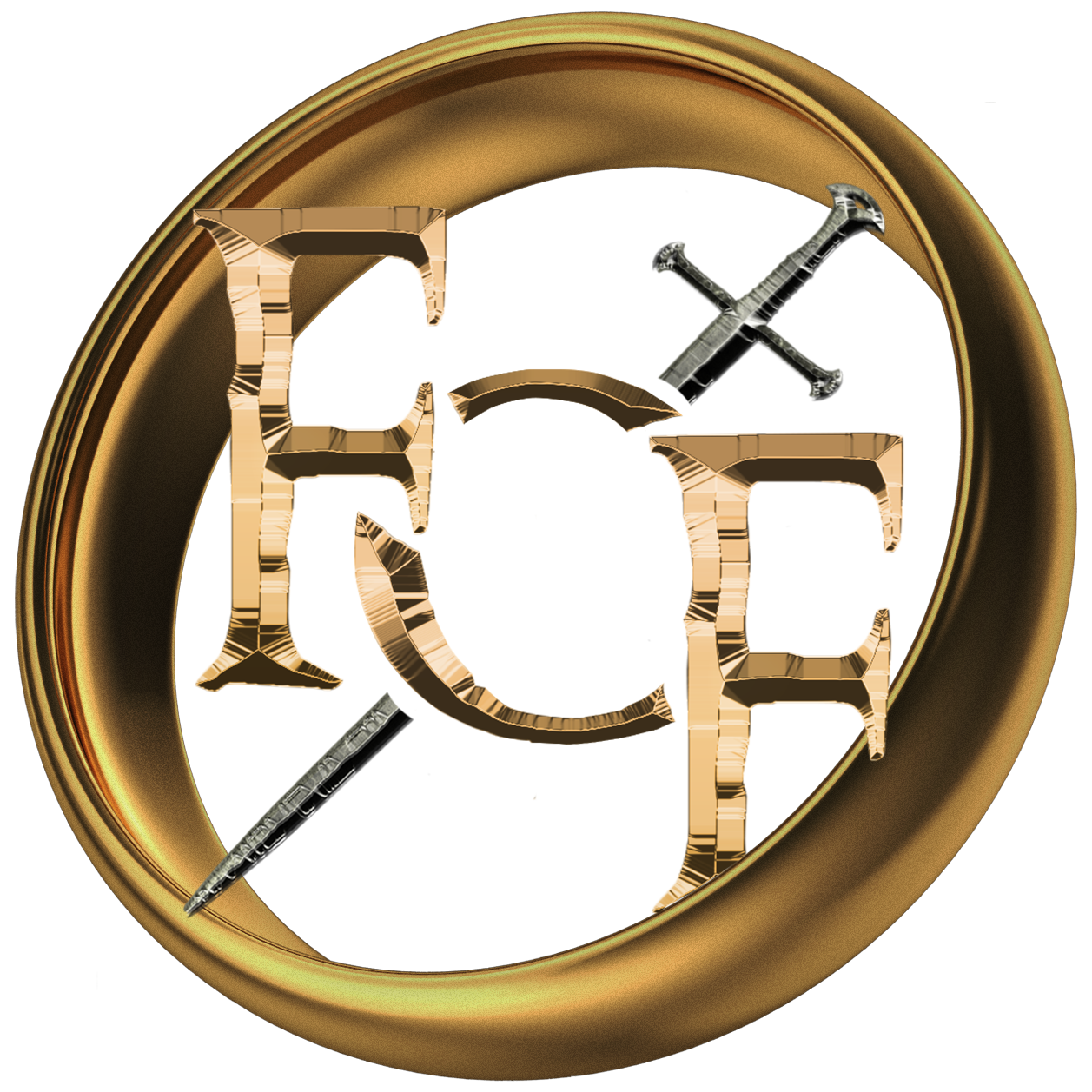
The Rings of Power: Our In-depth Analysis Of Episode Six “Udûn”
Mae govannen, mellyn!
Welcome back to our usual weekly analysis dedicated to The Rings of Power. Today we will talk about “Udûn”, the sixth episode of this first season, in which we find, for the first time, the direction of Charlotte Brändström, a very experienced figure known for projects such as Outlander, The Witcher, Grey’s Anatomy and The Man in the High Castle. For the writing we have Justin Doble (like the previous episode) and Nicholas Adams.
This episode was very special, as for the first time we are moving towards the definition of a plot. In fact, in this chapter the only scenario covered is that of the Southlands, tormented by the assaults of Adar and his orcs. Without wasting any more time, let’s immerse ourselves in the analysis of what happened, hoping not to miss anything.
Boom?#TheRingsOfPower pic.twitter.com/PMq7IHLgh6
— Fellowship of Fans (@FellowshipFans) September 30, 2022
The Southlands
The episode begins with one of the most intense moments of the entire first season: Adar gathers his orcs and performs an extremely intense speech, in which he shows a great attachment to them. This series has the great virtue of showing us orcs not as mere enemies, but as characters with hearts, feelings and thoughts, often pushing us to feel pain and compassion for them, and this is something we had never experienced in Jackson’s trilogies.
The evil army then marches on Ostirith, but what it finds is not a particularly pleasant surprise. In fact, the people of the south, aware of both the numerical and military superiority of the enemy, decide to abandon the location and to devise a trap with the aim of bringing down the tower on them, in order to significantly reduce their number. Thanks to Arondir’s courage the plan is successful, but there are still many orcs, and the people of the south prepares themselves to face another battle, this time inside the village. The atmosphere of the battle preparation scenes is very reminiscent of those we experienced during the siege of “Helm’s Deep” in Jackson’s “The Two Towers”, but with a certainly less epic scale, since this is not nothing more than a little skirmish. The scenes between Arondir and Bronwyn are very deep, and before the orcs arrive we get a beautiful reference to the Vala “Yavanna”, protector of all things that grows. In fact, as per the elven tradition (according to the series), alfirin seeds are planted before the battle, to symbolize the birth after the horrors of the war. This detail is certainly interesting, since it fits very well with the etymology of the name of the flower itself, which in Quenya means “immortal”. Another interesting detail is that alfirin grew in large quantities in the meadows of Lebennin, a famous region of Gondor.
Here is the full episode of our #TheRingsOfPower after party show for episode 6 with @bernardtorello & @VoiceOfGeek so make sure to check it out if you missed it earlier! Enjoy! @LotrParty https://t.co/lINQDlRC88 pic.twitter.com/OKuZMGFexF
— Fellowship of Fans (@FellowshipFans) October 3, 2022
The night comes and the Orcs present themselves to the village like fireflies in the deepest darkness, in a scene that recalls, in an opposite way, the death of the Dothraki during the “Long Night” in the last season of the Game of Thrones. The people of the south once again managed to trap them, setting fire to the escape routes and decimating them with arrows from the rooftops, allowing the rest of the people to emerge from the hips with pole weapons, ideal for hitting the opponent from an advantageous position in terms of space. When the battle seems to be won, however, Arondir discovers the horror: that Orcs vanguard was mostly made up of the southlanders who decided to side with Adar, and the screams of victory soon turn into cries of despair, since they understand the trap. Adar and the rest of the Orcs arrives accompanied by whistling arrows which take many victims, including Tredwill. Arondir and the rest of the people decide to barricade themselves in the tavern, so that they can heal the wounded from a covered position. The Silvan Elf and Theo manages to save Bronwyn (also hit by the arrows of the orcs) through the cauterization of the wound, but the joy does not last long, as Adar and his soldiers soon break down the doors and enter. The orcs show all their cruelty in order to be told where “the key” has been hidden, killing several innocent people in cold blood. At the end, seeing his mother menaced, Theo decides to reveal the position of the object, allowing Adar to fulfill his purpose.
Sundering Seas ?#TheRingsOfPower pic.twitter.com/EKOrvaLp72
— Fellowship of Fans (@FellowshipFans) October 2, 2022
Meanwhile the army of Numenor, which in the meantime has crossed the great sea and landed in the southlands, rides towards battle shaking the earth with the powerful hooves of their steeds. Someone pointed out that there are temporal issues with what we will see later, but this is often a directing technique based on showing the audience what is about to happen through particular flash-forwards. That scene can also be understood as an oncoming morning, as the southern people were barricaded inside a dark tavern and totally covered by outside light.
Adar soon realizes that something is coming and assigns an important task to Waldreg. Numenor’s cavalry arrives on the Orcs in the early morning, slaughtering them with a swift and crushing attack that leaves them no way out. The battle is brutal and bloody, full of spectacular moments but at the same time raw and very close to reality as it develops, given the differences in forces on the field. Galadriel chases Adar (who at that moment seems to escape with “the key”) aided by Halbrand, who deftly decides to ride on the opposite side to trap the corrupt elf. The two manage to capture him and we learn that Halbrand knows Adar, and that something serious has happened between the two in the past, despite the fact that the leader of the Orcs does not remember him.
The next scene is very, very interesting, as it shows us all the depth of Adar’s character, but at the same time further fuels the mystery towards him. Galadriel questions him to find out where Sauron is, but his words are very cryptic and the speech ends up leading to darkness and the creation of orcs. Finarfin’s daughter calls Adar a “Moriondor”, and this detail deserves great attention. The term is not present in Tolkien’s writings, but the production was probably inspired by Fíriel’s Song from “The Lost Road” for its creation. In that poem in fact, Melkor is referred to as “Morion”, which in Quenya means “Dark One”. The writers therefore came up with, together with the Tolkien Estate, a term that could identify the “first orcs”, that is, the first attempts by Morgoth to corrupt the elves. To sum it all up, Adar is one of the first elves corrupted by the first dark lord, even though he calls himself “Uruk”, which simply means “Orc” in the black speech.
Scene stealer & Show stealer
Bravo @realjosephmawle ? #TheRingsOfPower pic.twitter.com/aVS2xcgbdG— Fellowship of Fans (@FellowshipFans) October 1, 2022
The final sequence is destined to remain iconic in television history due to its importance, as it brings the creation of Mordor to the screens. Remember that old bastard Waldreg? The task that Adar had assigned him before the arrival of the Numenoreans was simply to go to a specific place and activate, through “the key”, a mechanism that causes the eruption of Mount Doom using the water, exploiting the tunnels dug by the orcs all that time. All of this was possible because Adar used a diversion aimed at deceiving his pursuers, making it appear that he had the real “key”. In my opinion this strategy worked precisely because it was the Fallen Elf who escaped with it and not a simple orc, and this led everyone to believe that the object was in his hands.
The waters rush into the tunnels and throw themselves into the fiery chasm, causing the volcano to erupt. Obviously, many have objected to this too, but fortunately it was the geologists who shed light on the matter, explaining how this phenomenon is scientifically correct. In fact the water, once in contact with the magma, generates bubbles that can turn into steam, and the steam and water expand so rapidly that they shoot the magma upwards, generating the birth of a volcano. Furthermore, it seems that most of the volcanic eruptions are caused by contact with water, and this further fuels the scientific coherence of the scene. As the people of the south and the Numenoreans celebrate the victory and return of the promised King (Halbrand), a magma shower causes death and destruction in the area, while smoke and lightning expands from the volcano in a threatening way, in a very apocalyptic scene. Galadriel and the village are hit by the awakening of Mount Doom, and the episode ends.
What if Meteor-Man actually is Gandalf and came to save the day??#TheRingsOfPower pic.twitter.com/LOoGzGiYgQ
— Fellowship of Fans (@FellowshipFans) October 1, 2022
Final Toughts
This is definitely the episode that seems to be the best received by both critics and most of the audience, and the reasons for this are pretty obvious. First of all, we are talking about the episode that finally gives an important acceleration in terms of pace and narration, bringing an important storyline close to definition. The action finally shows up on the screen, and for now it works, in my opinion, very well. The fight scenes features a lot of close-in-combat shots, as is often seen in works such as Vikings and Game of Thrones. There aren’t too many flying heads or weird choreographies, and it all seems brought to a very credible level of realism (Galadriel is an Elf commander, so for her is possibile to do that acrobatics moves). Charlotte Brändström direction is solid and fluid, which allows us to enjoy the action to the fullest.
Two final episodes full of questions and answers awaits us, and now that Mordor is born it is reasonable to expect Sauron to reveal himself soon. In the meantime, I thank you for reading this analysis as well, and I look forward to seeing you for the next episode.




No Comments